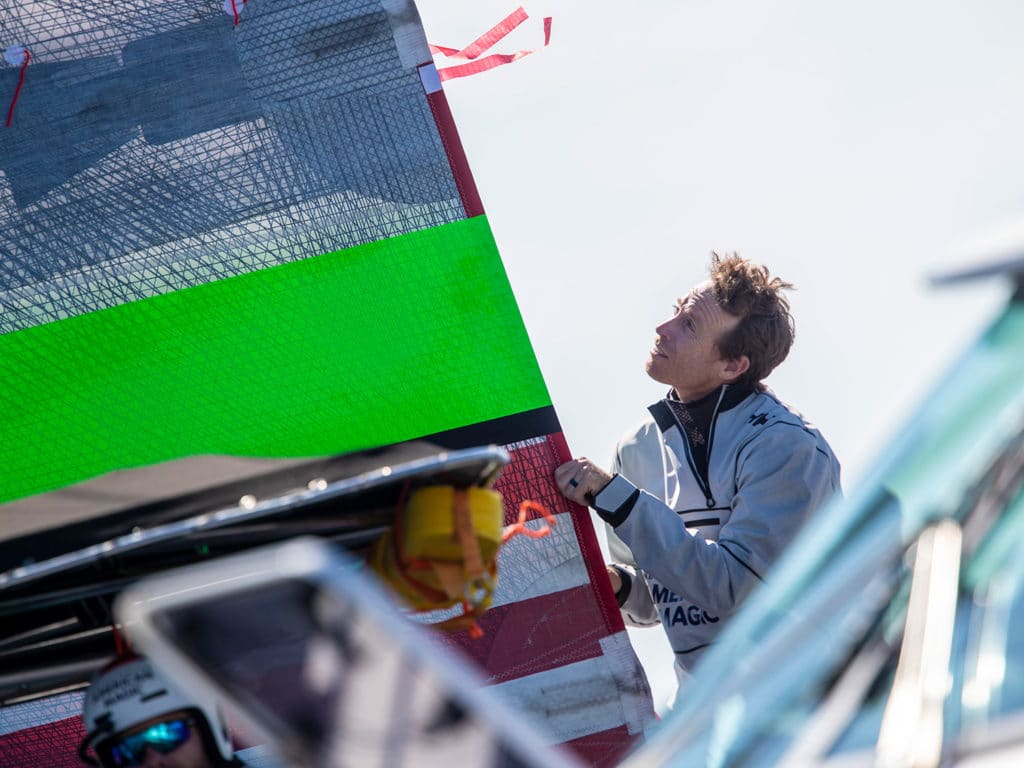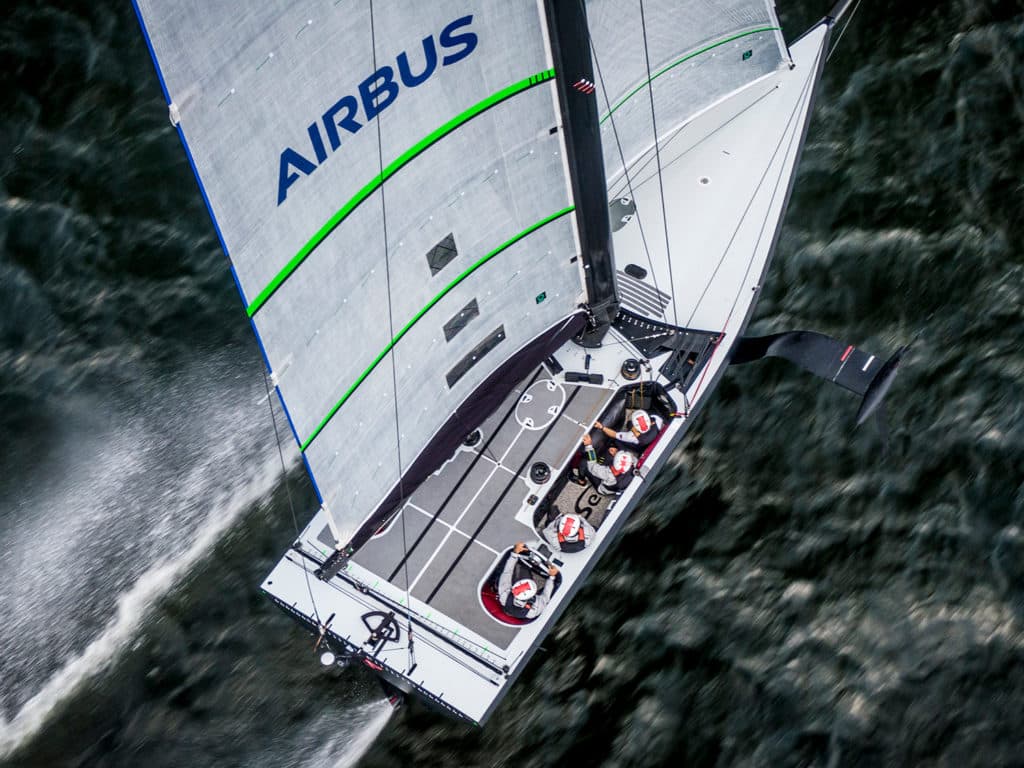
How exactly does one even begin to trim a twin-skin mainsail?
It’s really unusual from any other boat where you can practically look at the sail and know how to trim it. Now, we have an independent leeward skin of the mainsail, which is the most important side to get right. The problem is, you can’t actually see it—visually. It’s like a conventional mainsail in that you have the outhaul, the cunningham and the mainsheet, but you also have an upper-panel control, which is like having a top flap on the wing that we’re able to articulate, much like we could with the AC50 [wings]. There’s a 13-foot zone at the top of the rig where we can have as many strings as we want. We can basically attach anything to the back of the rig to move that part of the sail around. There is also mast rotation to play with, which is going to be a key trimming tool.
And how do you do that?
We have several different concepts we’re trying. Some are good at moving the leech around and some are good at moving the camber around, but getting one that’s able to do both is quite a challenge because the sail shapes you’re trying to achieve from upwind to downwind are very different.
These boats have a lot more righting moment than the AC50s—and less power relative to the righting moment. A sail is never going to be as efficient as a wing with a slot between that reattaches flow, so it’s never going to be quite as powerful as a wing. So the AC75 is potentially a little underpowered relative to its righting moment. You get going quite early in the catamarans and get overpowered very quickly; with this boat, you’re searching for power and much more comfortable when sailing in 20 knots plus. It’s really cool and quite exciting.
The D-Spar is supplied equipment; what can you do to it?
The rules say the sail has to be attached on both sides. Basically the top 13 feet are the part that we can control as we wish. The bottom 6 feet or so we can control as we wish as well. Between those zones is the challenging part. A lot of it is about the batten-setup orientation, which is open in this midzone. We can change battens a lot to try different positions and tapers, which all makes a big difference. Again, the shape we want on the windward side might not be what we want on the leeward side.

Are there restrictions on batten materials?
They can’t be inflatable. They have to be able to laid flat, but can be tapered; however, there is plenty you can do there. There’s a lot of money for batten manufacturers to make this time around.
The top panel is important to get right as well? It’s very much like a wing flap that you can manipulate. It’s like the AC50s, but with the hard wing it’s easy to get a nice transition because you can move all the intermediate points of the wing—whereas only being able to move the top panel creates a hard point between the part that’s moving and the part that isn’t. There are any number of tracks teams could go down. It’s not easy to switch between one and the other.
What’s happening at the bottom of the sail?
Whether teams decide to go without a boom, or with a boom with arms, or strings or a truss system is going to be interesting. A lot of spies are now trying to figure out what each team has and how they will control them for the first couple of months after the 75s get launched. It’s a really cool piece of learning, but there are so many variables.
Take us through maneuvers.
The one big challenge with this type of boat will be the takeoffs. In 7 knots of breeze, if you sheeted the sails on, the boat would capsize because there’s so little righting moment available at that speed. With so little righting moment, both sails are almost luffing and it feels wrong. You’re trying to accelerate, but you have to ease the sails so the boat doesn’t heel over. The way the foil geometry works, as soon as you heel over, you lose a lot of righting moment very fast. So it’s about trying to accelerate with a flat boat, and this is where the big top-panel inversion and the deeper cambers to start the acceleration come in. Then, very quickly, you have no sort of righting moment. As soon as it accelerates above 10 knots, the foil flap is acting like a sail-trimming tool. Righting moment comes very quick, so you have to then generate a lot more power in the sails to push it over the hump and get airborne. Then it’s about getting quite flat or else you heel over quickly. The takeoffs will really hurt the grinders because there will be a lot of power required to do this. Plus, the amount of functions we have—two outhauls, two cunninghams, two big surfaces to move—is quite power demanding.









